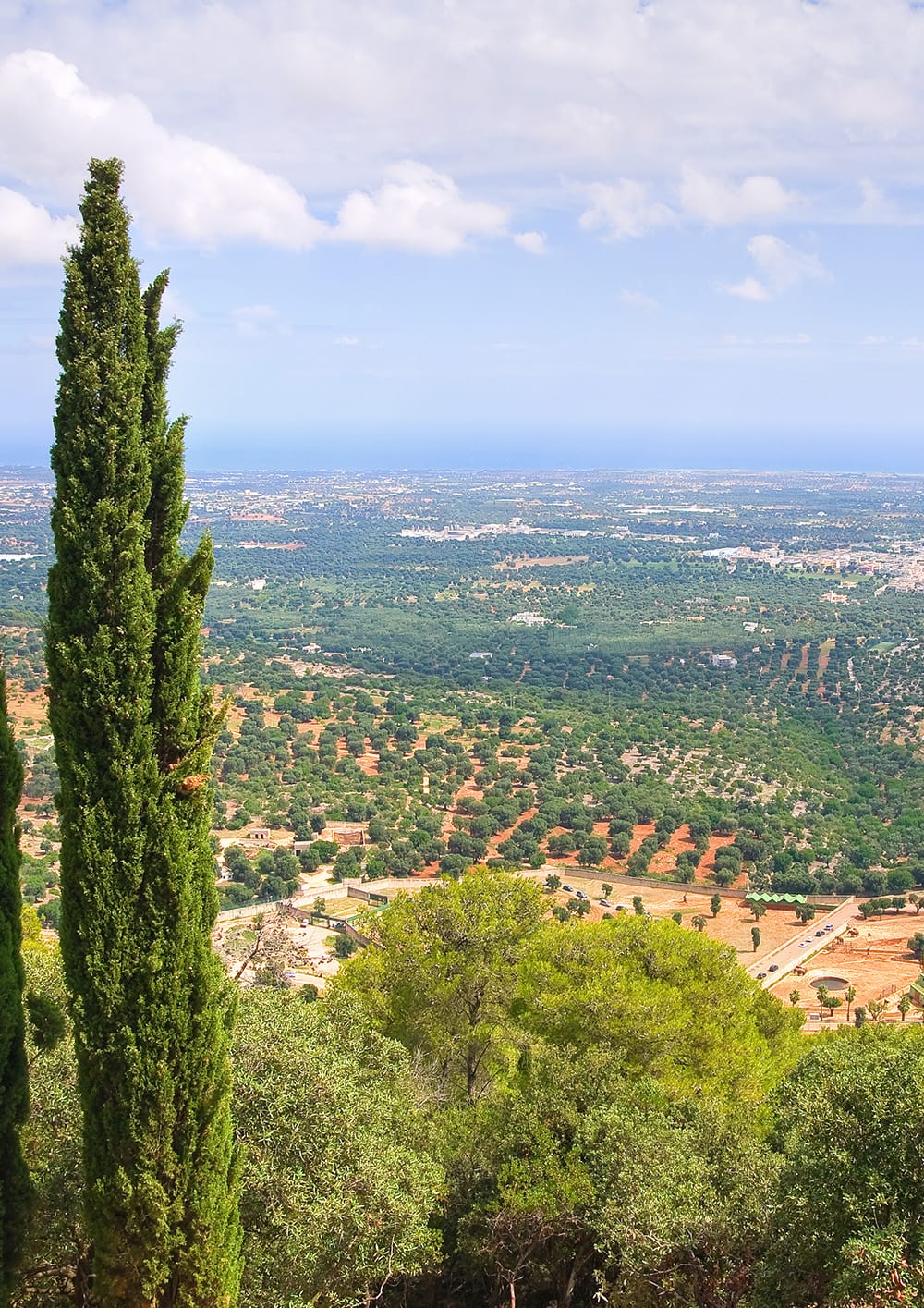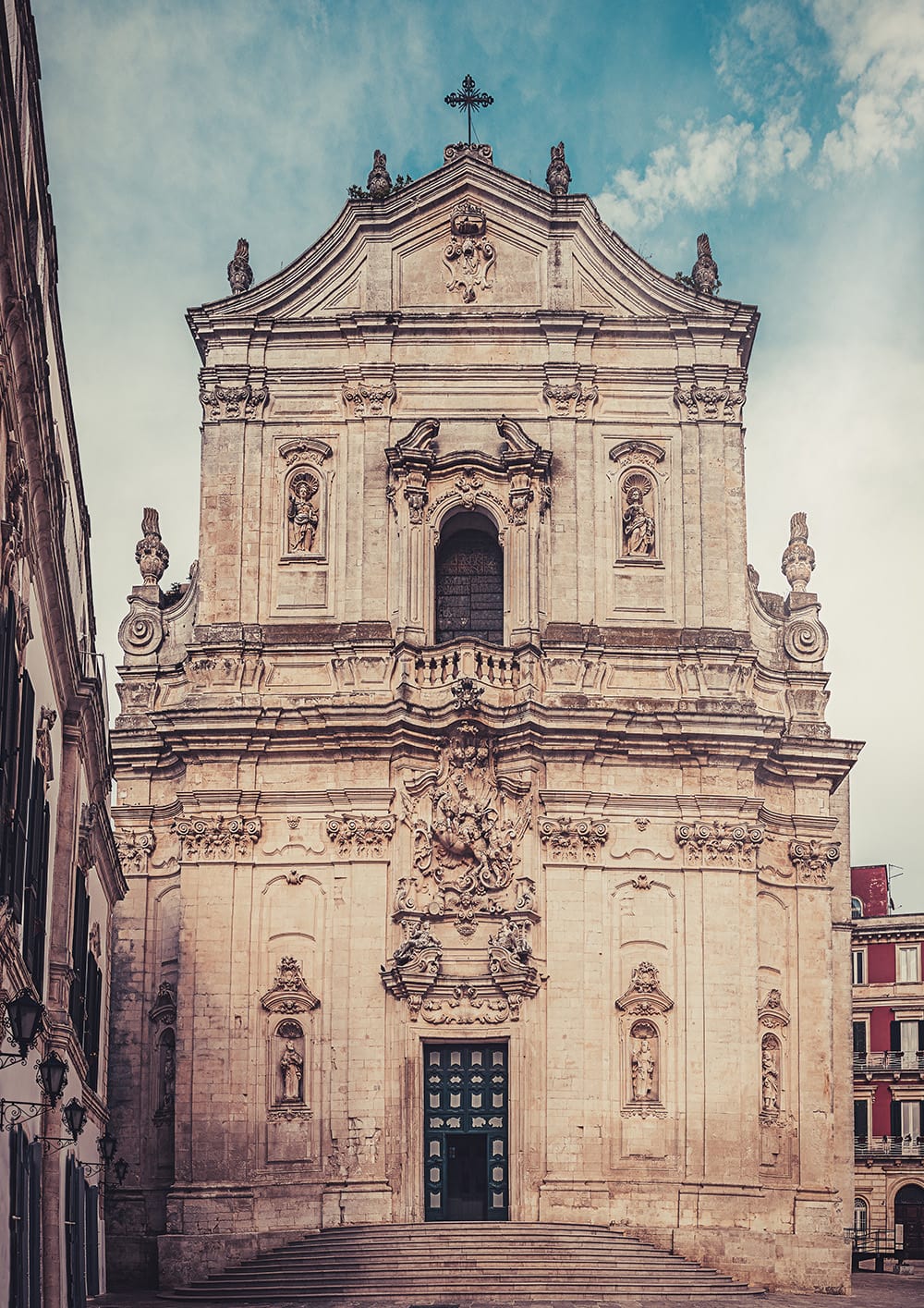
The Valle d’Itria, located in the vibrant heart of Puglia, represents a charming crossroads between the Adriatic Sea and the rich Puglian hinterland. This area, just a twenty-minute drive from the sea, is nestled between the provinces of Bari, Brindisi and Taranto, stretching from the edges of the Murge to the borders of Salento. Geographically, it is characterized by a karst depression that winds through the municipalities of Locorotondo, Cisternino and Martina Franca. The landscape of the Valle d’Itria is immediately recognizable for the widespread presence of trulli, traditional rural stone constructions with their characteristic conical roofs.

The Unique Charm of the Trulli of the Valle d’Itria
The trulli, a distinctive symbol of Puglia, contribute to creating an almost fairy-tale atmosphere, spreading throughout the entire valley. These peculiar structures, with their conical shapes and distinctive pinnacles, majestically emerge in the landscape, presenting themselves not only in Alberobello but also in the surrounding villages, along fields, and at the edges of roads, bordered by labyrinths of dry stone walls. Alberobello, in particular, is the beating heart of this architecture, with more than 1500 trulli preserved in its historic districts of Monti and Aja Piccola.

Alberobello: The Heart of Trulli
Alberobello is undoubtedly the most famous destination in the Itria Valley, known worldwide for its trulli. Its UNESCO World Heritage-listed historic center is an intricate maze of sparkling trulli transformed into lively venues, restaurants and souvenir shops.
The ideal conclusion to a visit to this unique city is a stroll on the Balcony of Santa Lucia, reached through a staircase adorned with poetic phrases. Here, visitors are rewarded with a spectacular view extending over a sea of conical roofs and cobblestone streets.

Locorotondo and its panoramic 'Promenade'
Locorotondo, as the name suggests, is a circular-shaped town, with a historic center that wraps around itself. Unlike other areas of the valley, here you find the cummerse, traditional houses with sloping roofs covered in chiancarelle. Wandering through its alleys, you discover a mosaic of bucolic images, with flowered balconies cacti at every corner and picturesque colored doors.
Via Aprile is particularly scenic and leads to Via Nardelli, known as the "promenade" of Locorotondo. Here, the city's most famous balcony offers a panoramic view of the Itria Valley, with its trulli, olive groves and farmhouses, extending to Martina Franca and Cisternino. The optical effect created by the morning mist gives the illusion of a sea on the horizon.

Martina Franca: The Baroque Pearl of the Valley
Martina Franca, known for its elegance and beauty, is an architectural gem characterized by a strong presence of Baroque style. The historic core, rich in architectural beauties such as the Basilica of San Martino, the Ducal Palace and the spectacular Piazza Maria Immacolata, is a concentration of art and history. The district of Lama, once modest, is now one of the most charming and photographed areas of the city, with its small adjacent houses and sloping roofs creating a unique landscape.

Cisternino: Culinary traditions and breathtaking views
Cisternino stands out for its rustic and welcoming atmosphere, being one of the most beautiful villages in Italy.
Famous for its "fornelli"," traditional taverns where you can taste delicious meat bombette and other local specialties, Cisternino is a paradise for food enthusiasts.
Strolling through the alleys surrounding Piazza Vittorio Emanuele, you can discover dozens of cozy tables, while the Clock Tower, a symbol of the city, dominates the scene. Here too, the panoramic terrace of Piazza Garibaldi offers a lovely view of the Valle d’Itria.